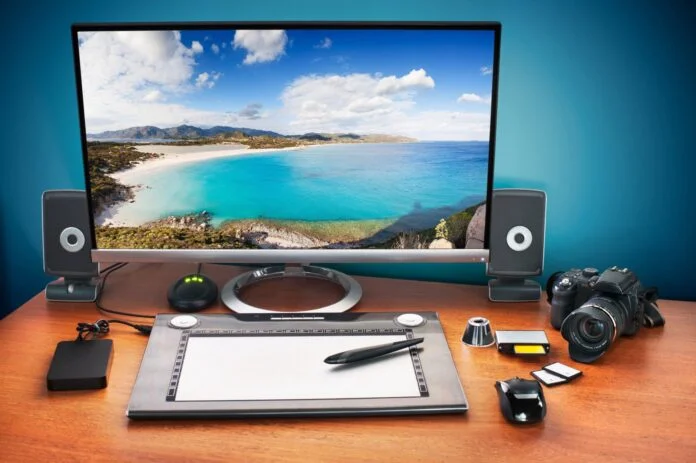Today’s technologies are drastically altering our world, and desktop computers are playing a crucial part in this change. The future of desktop computing is expected to be even more revolutionary and exciting as technology develops at an astounding rate in 2030.
The future of desktops and how they will impact our digital experiences will be examined in this article as we look ahead at prospective developments and breakthroughs.
1: Quantum Supremacy
Quantum computing is expected to make impressive strides in the following ten years, bringing with it previously unheard-of processing power. Quantum desktops will handle complex operations at remarkable rates, revolutionizing industries including drug research, artificial intelligence, weather forecasting, and cryptography.
By tackling problems that are now beyond the capabilities of conventional computers, quantum supremacy will facilitate advancements in various industries.
This breakthrough has the potential to transform computation, ushering in a new era of powerful problem-solving and opening up new horizons for technological and scientific advancement.
2: More Powerful and Versatile
Future desktops will feature modular architecture, giving customers the option to easily upgrade and personalize their computers. In order to meet changing demands, these versatile computers will easily accept more processing power, memory, or specialized components.
Encouraging sustainable practices in the technology sector, adopting modularity will reduce electronic waste and increase the lifespan of workstations. Users will benefit from a more environmentally responsible computer experience, while producers can concentrate on making durable, functional goods that adhere to the values of environmental responsibility.
3: Augmented Reality
An additional technology that has recently gained popularity is augmented reality (AR). Users of AR can interact with digital items that are superimposed on their actual surroundings.
Users will encounter a seamless fusion of the real and digital worlds, opening up new possibilities for work, education, and communication. Immersive interfaces will change how we engage with our computers and revolutionize productivity and fun.
It is anticipated that in the future, AR will be utilized to boost productivity by giving pertinent information just when it’s needed.
4: Edge Computing for Real-Time Responsiveness
Edge computing will become more prevalent in desktop computing in the future, reducing the reliance on cloud-based processing for particular tasks. A distributed computing paradigm known as edge computing moves computation and data storage closer to the network’s edge, where users are located.
Since less distance must be traveled for data to be processed, this can reduce latency and speed up response times.
Edge computing can enhance desktop user experience by enhancing the responsiveness and fluidity of programs. This is especially helpful for real-time simulations and data-intensive applications where latency can be a big problem.
5: Enhanced Security and Privacy Measures
Advanced security techniques, like biometric authentication and encryption, will be used to safeguard user data from illegal access. By doing so, consumers will be protected from online dangers like hacking and data leaks.
Secure hardware components will provide further defense against potential threats. Decentralized and blockchain-based solutions may also improve online security by offering a transparent and impermeable foundation for data security.
6: Head-Mounted Display
The constraint of desktop screen size can be solved by using a very high-resolution head-mounted display. Traditional huge displays are no longer necessary thanks to this technology, which enables users to scale the virtual display to any desired size.
A lightweight and flexible option, the head-mounted display allows users to enjoy a more immersive computer experience with more freedom.
They can even abandon the keyboard and develop wearable models that wirelessly or plugged into the head-mounted display, keyboard, and pointing device, which might be modular as well.
7: Green Computing and Energy-efficiency
Future desktop computers will prioritize energy efficiency and environmental friendliness in order to address environmental issues. By adopting environmentally friendly materials to make desktops, manufacturers will adopt sustainable business methods.
They will create hardware components that are power-efficient while still performing at their best. Innovative energy-saving technologies will be incorporated to reduce energy usage while in use.
As a result of our combined efforts, desktop computing will have a much smaller carbon footprint, encouraging a greener and more sustainable approach to technology without sacrificing usability or user experience.
8: More Portable
They will therefore have more battery life and smaller form factors. They will be easier to utilize when traveling as a result. Some desktop computers could one day be small and transportable, fitting into a bag or backpack.
With their long battery lives, these cutting-edge desktop computers could operate for several hours without a power source.
By enabling users to use their PCs in a variety of settings without being restricted to a fixed power outlet, such as coffee shops, libraries, and airports, this portability and increased battery capacity would improve customer convenience.
Conclusion
The possibilities for innovation and transformation are exciting as we look ahead to the personal computer industry in the following ten years.. Responsible use of these technical developments will enable us to reach higher levels of productivity, creativity, and connectivity.
Ultimately paving the way for a more promising future for personal computing. The options are endless, and the voyage has only just begun.

